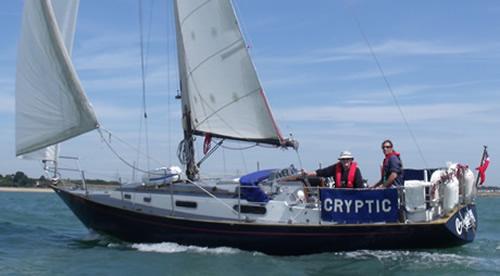22nd June to 2nd July 2015 (though Stan and I went up on 21st June).
1. Dunstaffnage to Rùm (Loch Scresort)

2. Rùm to Loch Eport (Loch Euphoirt)


3. Loch Eport to Lochmaddy
4. Lochmaddy to Scalpay
5. Scalpay to Badachro in Gairloch via Shiants
6. Gairloch to Kyle Of Lochalsh
7. Kyle Of Lochalsh to Mallaig
Stayed 2 nights in Mallaig
8. Mallaig to Lochaline
9. Lochaline to Dunstaffnage
The Shiant Isles (Gaelic: Na h-Eileanan Seunta or Na h-Eileanan Mòra) are a privately owned island group in the Minch, east of Harris in the Outer Hebrides of Scotland. They are five miles south east of Lewis, across the Sound of Shiant. The name "Shiant" (pronounced "Shant") is from the Scottish Gaelic: Na h-Eileanan Seunta pronounced [nə ˈhelanən ˈʃiant̪ə] ( listen), which means the "charmed", "holy" or "enchanted isles". The group is also known as Na h-Eileanan Mòra, "the big isles" [nə ˈhelanən ˈmoːɾə]. The main islands are Garbh Eilean (rough island) and Eilean an Taighe (house island), which are joined by a narrow isthmus, and Eilean Mhuire (island of the Virgin Mary) to the east. In geological terms, these islands essentially represent an extension of the Trotternish peninsula of Skye. The rocks are volcanic, and are very young by Hebridean standards. There is a sea cave - Toll a' Roimh on Garbh Eilean
The author and politician Compton MacKenzie owned the islands from 1925 until 1937. He was an island lover who, at different points in his life rented Herm in the Channel Islands. He never lived on the Shiants, but paid several brief visits during his time as owner. In 1937 the islands were acquired by Nigel Nicolson, then an undergraduate at Oxford, from monies left to him by his grandmother. Like MacKenzie, Nicolson was later a writer, publisher and politician. Nicolson's son, the writer Adam Nicolson, published the definitive book on the islands, Sea Room. The Shiants now belong to Adam's son Tom. Sheep belonging to a Lewis crofter graze all three islands. The simple bothy restored by Nigel Nicolson on Eilean an Taighe is the only habitable structure on the islands.
The Shiant Isles have a large population of seabirds, including tens of thousands Atlantic puffins breeding in burrows on the slopes of Garbh Eilean, as well as significant numbers of common guillemots, razorbills, northern fulmars, black-legged kittiwakes, common shags, gulls and great skuas. Although St Kilda has more puffins, the sheer density on the Shiants is greater.
The islands are also home to a colony of black rats, which may originally have come ashore from a shipwreck.Apart from one or two small islands in the Firth of Forth, the Shiants are the only place in the UK where the black rat lives. Over the winter of 2015/16, a rat control project, sponsored by the RSPB and paid for with contributions from the EU, SNH, the RSPB itself and many individual donors, will attempt to eradicate the rats from all the Shiant islands permanently.




